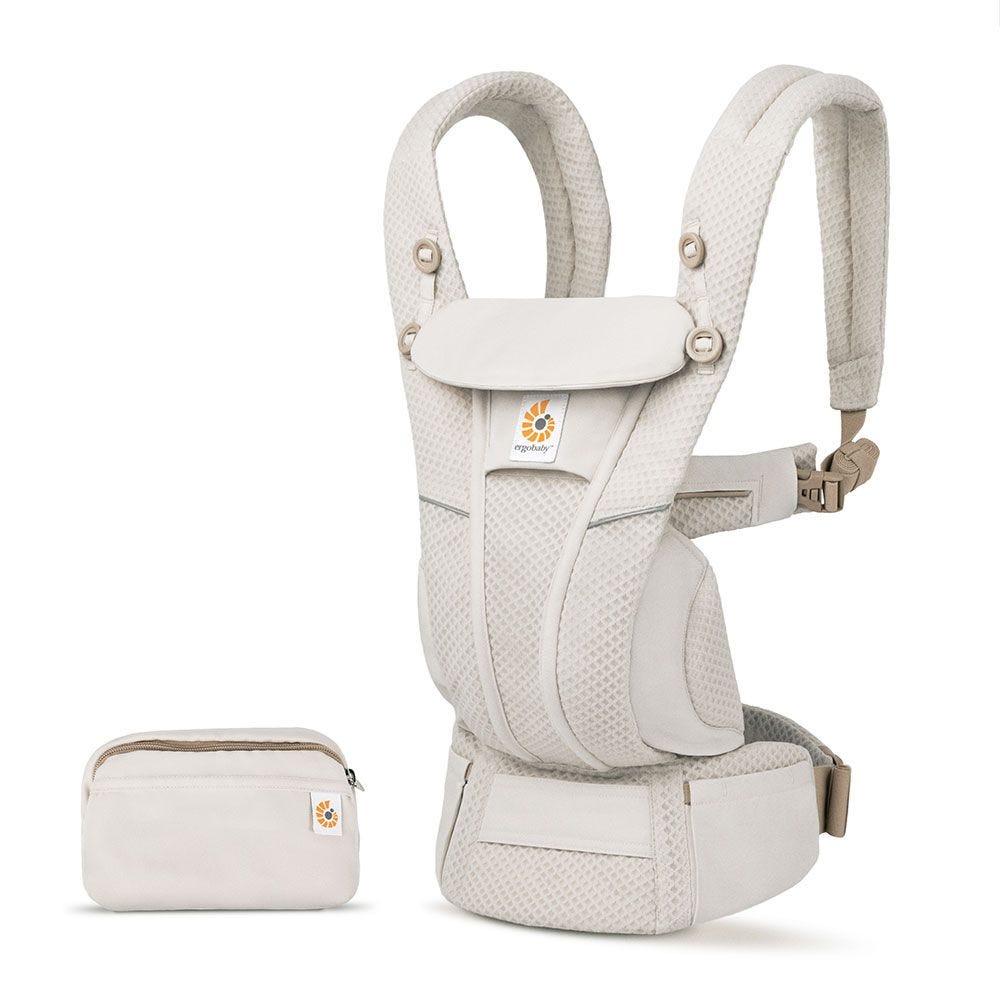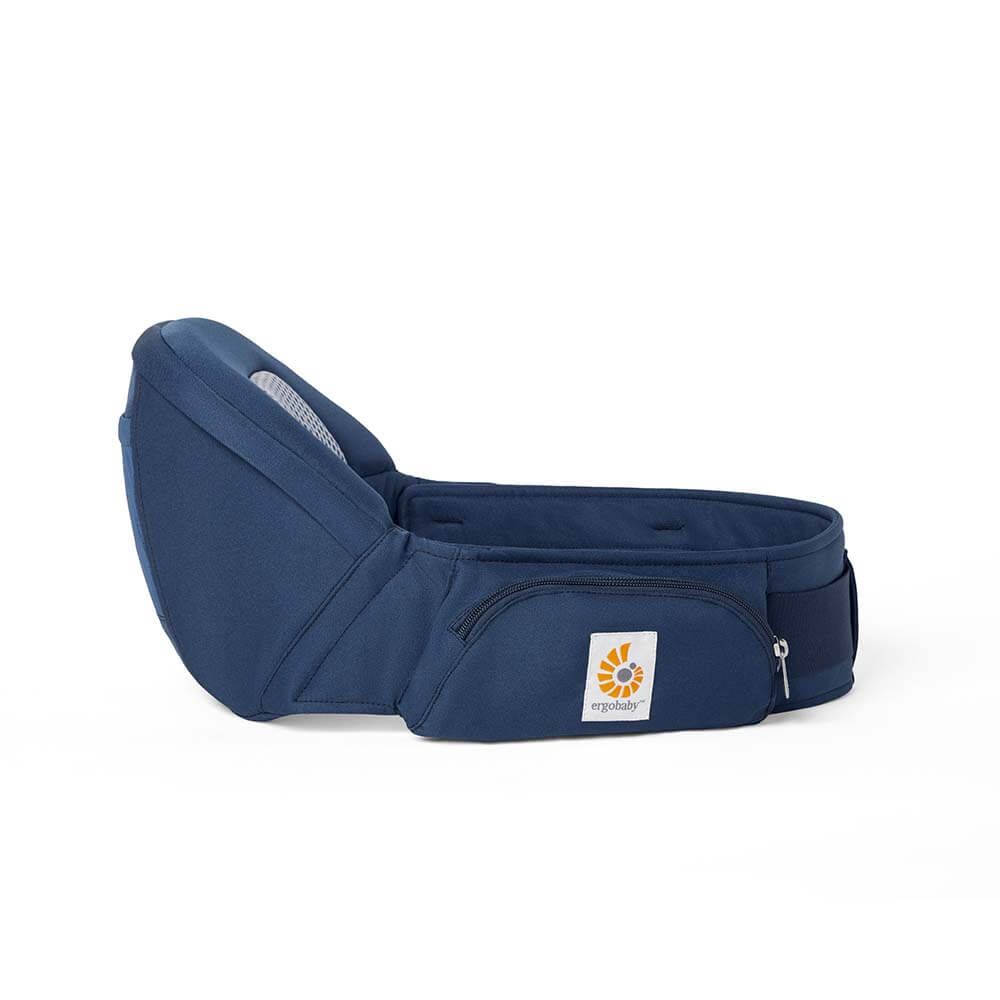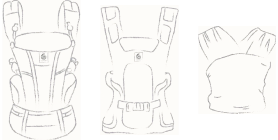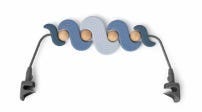What to Expect With Your First Pregnancy
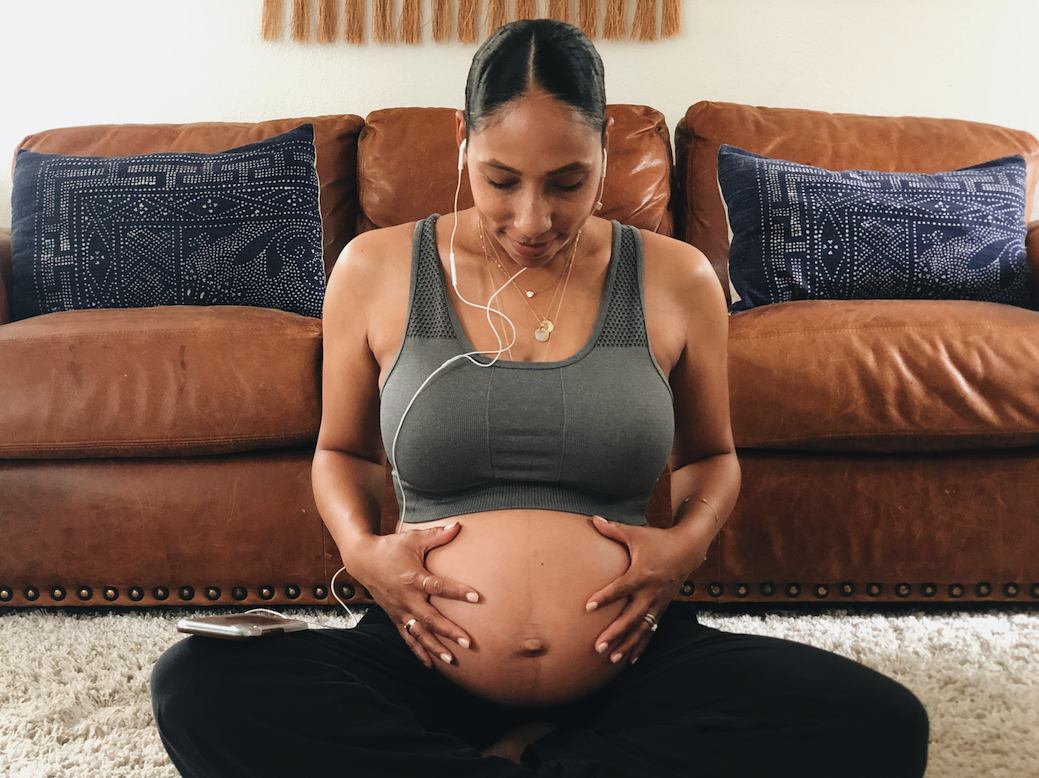
Pregnancy affects a lot. It will affect your body, mood, energy, mindset, appetite, and ability to sleep. It can affect you and your partner’s relationship. From symptoms and body changes to prenatal visits and more, here are some things to expect with your first pregnancy.
First Trimester: Weeks 1-13
What to Expect With Your Body
 Your body can start experiencing changes even during the very first week of pregnancy. You may have some light spotting and mild abdominal and back cramping, which some women mistake for their period instead of a sign you are pregnant. Other first signs are tender breasts and possible morning sickness. Some women vomit, while others simply feel nauseous.
Here are other feelings and symptoms of being pregnant you may experience:
Your body can start experiencing changes even during the very first week of pregnancy. You may have some light spotting and mild abdominal and back cramping, which some women mistake for their period instead of a sign you are pregnant. Other first signs are tender breasts and possible morning sickness. Some women vomit, while others simply feel nauseous.
Here are other feelings and symptoms of being pregnant you may experience:
- Mood swings (happy one minute, feeling stressed the next)
- Aches and pains
- Fatigue
- Headaches
- Heartburn
- Food aversions
- A heightened sense of smell and taste
- Growing breasts
- Skin breakouts
- Glowing skin ( “pregnancy glow”)
- Dizziness
- Frequent urination
- Slightly blurry vision
- Clumsiness
Some of these can continue through the other trimesters, while some are more common in the first trimester.
Cravings can also hit toward the end of this trimester if you’re not too sick. And while Ben & Jerry’s ice cream may be calling you, don’t indulge every night. Treat yourself, but try to eat a well-balanced diet each trimester because, even though you’re eating for two, you only need to eat 300 extra calories a day, specifically during your second and third trimester.
As far as your stomach, you likely won’t show yet, especially with your first. But you may feel slightly bloated during the end of the first trimester, and you should gain a few pounds. But if you lose a couple from being sick, it’s usually not a cause for concern. Ask your OB/GYN or midwife if you’re worried about your weight.
What to Expect With Your Prenatal Visits
During your first trimester, you should see your OB/GYN or midwife every four weeks. At your first prenatal visit, which should happen between 6-10 weeks into your pregnancy, your OB/GYN or midwife will:
- Assess your current health
- Ask about your personal and family medical history
- Talk to you about any potential risk factors
- Do a thorough physical exam
- Take a urine and a blood sample for testing
- Do an ultrasound
- Determine your baby’s gestational age
- Discuss prenatal vitamins options with you to choose which you should be taking
This first visit is usually the longest. But let me give you a quick first-time pregnancy tip—come knowing information about your last period and medical history to help speed things along. Also, never be afraid to ask any questions you have, you’re new to this process and that’s okay! Your doctor is there to help you and give you as many first time pregnancy tips he or she can!
During the subsequent visits this trimester, you’ll be weighed, have your blood pressure taken, given a urine sample, checked for swelling, and have your belly measured. You’ll also get to listen to your baby’s heartbeat. You may be offered more ultrasounds, genetic diagnostic tests, and the flu shot depending on the season. You might feel a little overwhelmed by all the tests and doctor’s visits, but try to remain calm. Try to remember all of these tests and steps are to ensure you and your baby are healthy and doing well. If you have a question or concern, do not hesitate to ask. Doctors and nurses are well-versed in giving first time dad and moms healthy tips to help them during their first trimester especially!
Second Trimester: Weeks 14- 27
What to Expect With Your Body
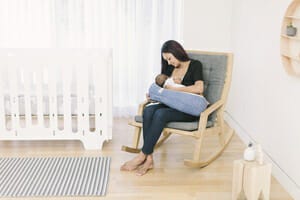 Many women call this the “feel good” trimester. Expect your appetite and energy to come back. But there’s a chance you’ll still experience morning sickness through part or all of your second trimester.
And if you weren’t showing yet, you will this trimester. But it’s OK; this is when you have a cute “popped” belly. And speaking of a growing belly, during the second trimester you should start gaining about one pound a week. So maybe do your hormonal self a favor and stay off those scales until you have to step onto one during your checkups.
Along with your growing belly, expect to feel more achy and tired. You can have increased back pain, as well as round ligament pains. The latter are sharp pains in your abdomen, hips, and groin caused by the stretching and pulling of the round ligaments attached to your uterus and pelvic sidewall. Feeling unbalanced and getting more easily lightheaded because your blood pressure has dropped are two other things to thank your growing baby and belly for. Some women also experience carpal tunnel syndrome and skin darkening around their belly button, armpits, thighs, eyes, and other places you may find out.
But not all pregnancy symptoms and hormones are bad. During the second trimester, you may notice stronger nails and fuller hair. But with that tends to also come hair in unwanted places.
Now for some good news. Between your 16th and 20th week, you should feel your baby move for the first time. But because it’s such a subtle movement, like a little flutter, you might mistake it for indigestion or a hungry, rumbling stomach. But as the weeks go on, you’ll start recognizing and feeling your baby’s movements more.
Many women call this the “feel good” trimester. Expect your appetite and energy to come back. But there’s a chance you’ll still experience morning sickness through part or all of your second trimester.
And if you weren’t showing yet, you will this trimester. But it’s OK; this is when you have a cute “popped” belly. And speaking of a growing belly, during the second trimester you should start gaining about one pound a week. So maybe do your hormonal self a favor and stay off those scales until you have to step onto one during your checkups.
Along with your growing belly, expect to feel more achy and tired. You can have increased back pain, as well as round ligament pains. The latter are sharp pains in your abdomen, hips, and groin caused by the stretching and pulling of the round ligaments attached to your uterus and pelvic sidewall. Feeling unbalanced and getting more easily lightheaded because your blood pressure has dropped are two other things to thank your growing baby and belly for. Some women also experience carpal tunnel syndrome and skin darkening around their belly button, armpits, thighs, eyes, and other places you may find out.
But not all pregnancy symptoms and hormones are bad. During the second trimester, you may notice stronger nails and fuller hair. But with that tends to also come hair in unwanted places.
Now for some good news. Between your 16th and 20th week, you should feel your baby move for the first time. But because it’s such a subtle movement, like a little flutter, you might mistake it for indigestion or a hungry, rumbling stomach. But as the weeks go on, you’ll start recognizing and feeling your baby’s movements more.
What to Expect With Your Prenatal Visits
During your second trimester, you’ll again see your OB/GYN or midwife every four weeks. Expect them to take your weight, blood pressure, and a urine sample. They’ll also examine your belly, listen to your baby’s heartbeat, and ask if you’ve felt movement yet. Your OB/GYN or midwife may tell you to take an additional dose of iron along with your prenatal pills to reduce your risk of anemia.
You may be given a glucose screening test during this trimester or your third, along with other screenings, and you’ll have an ultrasound to check for any physical abnormalities. This is also when you can find out your baby’s gender.
Third Trimester: Weeks 28-40
What to Expect With Your Body
The third trimester means you’re in the home stretch—for a lot of pregnant women though, it’s also the longest trimester. And many attribute that to an ever-growing belly and how physically hard your third trimester can be.
Some possible things to look forward to are: (read with sarcasm)
- Shortness of breath
- Heartburn
- Stretch marks and itchy skin
- Lower back and hip pain
- Sciatica
- Fatigue
- A lot of adjusting as you try to get comfortable sitting and laying down
- Nausea and loss of appetite
- Braxton Hicks contractions, a.k.a. the sporadic starter contractions preparing your body to give birth
By the 34th week or so, you probably won’t be able to look down and see your feet. Let alone paint your own toenails or maybe even shave your legs. It’s normal. Have your partner help you out with that stuff! Plus, who likes looking at feet anyway? But on the plus side, weight gain usually stops around this time or at least you shouldn’t be gaining as much during the last few weeks of pregnancy.
Between two to four weeks before you give birth, your baby will drop. This means your baby is getting settled lower down your pelvis in preparation for delivery, and it means, although you still feel like a beach ball, your belly may feel lighter. About this time is also when your milk glands are filling with colostrum.
What to Expect With Your Prenatal Visits
During your third trimester, from weeks 28-36, you should still be seeing your OB/GYN or midwife every two weeks, and then after week 36, every week until you have your baby. Again, you’ll be physically examined by checking your weight, blood pressure, belly size, urine, and for any swelling. Your caregiver should also do regular vaginal exams to check your cervix toward the end of your pregnancy. They will also check your baby’s heartbeat, feel your baby through your belly to estimate his or her size, and test you for group B strep.
This is a good time to ask any and all labor and delivery questions, as well as bring up any concerns and discuss your birth plan.

Labor and Delivery
What to Expect With Labor
There are three stages of childbirth: labor, delivering the baby, and delivering the placenta. There are also three phases of labor:
- Early Labor - This phase is usually the longest, but also the least painful. It can range from 8-12 hours or even a couple of days, especially for first-time moms. You'll experience mild contractions that may or may not bother you. Those contractions will last between 30-45 seconds and happen every 5-30 minutes. Your cervix will efface and dilate to 3 cm during early labor, and you could experience several labor signs, such as cramping, pelvic pressure, backache, indigestion, or your water breaking.
- Active Labor - This is the point where you need to be ready at the hospital or wherever you’re giving birth. You’ll know you’re in active labor because your contractions will go from mild to strong. They’ll also be closer together, lasting between 45-60 seconds and happening every 3-5 minutes. Your cervix will dilate from 4-7 cm. You may also experience increased discomfort in your legs, back, and with the contractions—you may not be able to talk through the contractions. To help alleviate these pains and discomfort, you can ask for an epidural or use more natural relaxation techniques. Your water will also break during this phase, either on its own or by your OB/GYN or midwife, if it hasn’t already. On average, active labor lasts between 3-5 hours.
- Transitional - Also called advanced labor, the final phase of labor is the most intense, but it’s also the shortest. It may only last several minutes, but it could last 2 hours. Contractions are strong and long. They can last between 60-90 seconds and happen every 30 seconds to 2 minutes. You could also experience chills, hot flashes, nausea, vomiting, fatigue, muscle contractions which will cause you to shake, and increased back and rectal pressure. Your cervix will dilate from 8-10 cm.
What to Expect With Delivery
Delivering Your Baby
The second stage of childbirth is when you actually deliver your baby. Up until you hit 10 cm, your body was doing most of the work. Now it’s time for you to push and help get your baby out.
Each woman and delivery is different. You may push for a minute or you may push for a couple of hours. You should have a natural urge to push, but your OB/GYN and nurse or midwife will tell you when and for how long to push. Use gravity to your advantage during this stage, and push in a position that’s as comfortable as you can be at this point. You may also have a c-section and won’t do any pushing.
 Don’t be alarmed when your baby comes out covered in a white, cheesy substance with lots of fine hairs or if he or she has puffy eyes and a cone-shaped head. All of this is normal. If you wish, you can hold your baby immediately after he or she is born and have some skin-to-skin time, as long as everything is fine with you and your baby. With a c-section, you typically are stitched up and taken to a recovery room before you can hold your baby. But your partner should be able to hold your baby and let you see him or her while you’re being stitched up.
Don’t be alarmed when your baby comes out covered in a white, cheesy substance with lots of fine hairs or if he or she has puffy eyes and a cone-shaped head. All of this is normal. If you wish, you can hold your baby immediately after he or she is born and have some skin-to-skin time, as long as everything is fine with you and your baby. With a c-section, you typically are stitched up and taken to a recovery room before you can hold your baby. But your partner should be able to hold your baby and let you see him or her while you’re being stitched up.
Placenta Delivery
After delivering your baby, you’re not quite done. You still have to deliver your placenta. Once your OB/GYN or midwife notices small contractions, they or a nurse will apply a little pressure by massaging your uterus to help you deliver your placenta. This stage typically takes 5-30 minutes. If you have a c-section, your doctor will take out your placenta.
After the placenta delivery, you may shiver and shake. You’ll also be monitored for a few hours to make sure everything is OK with you and your uterus. Oh, and you’ll get to finally relax and enjoy your baby!
Be sure to enjoy your baby and hold them close to you wherever you go in an adorable baby carrier wrap or one of our infant baby carriers. We’ve made our baby wrap simple with lightweight, soft and supportive fabric. You’ll have peace of mind knowing your little one is safe and secure snuggled up close to you!
Top photo credit Kelly McKnight

 Your body can start experiencing changes even during the very first week of pregnancy. You may have some light spotting and mild abdominal and back cramping, which some women mistake for their period instead of a sign you are pregnant. Other first signs are tender breasts and possible morning sickness. Some women vomit, while others simply feel nauseous.
Here are other feelings and symptoms of being pregnant you may experience:
Your body can start experiencing changes even during the very first week of pregnancy. You may have some light spotting and mild abdominal and back cramping, which some women mistake for their period instead of a sign you are pregnant. Other first signs are tender breasts and possible morning sickness. Some women vomit, while others simply feel nauseous.
Here are other feelings and symptoms of being pregnant you may experience:
 Many women call this the “feel good” trimester. Expect your appetite and energy to come back. But there’s a chance you’ll still experience morning sickness through part or all of your second trimester.
And if you weren’t showing yet, you will this trimester. But it’s OK; this is when you have a cute “popped” belly. And speaking of a growing belly, during the second trimester you should start gaining about one pound a week. So maybe do your hormonal self a favor and stay off those scales until you have to step onto one during your checkups.
Along with your growing belly, expect to feel more achy and tired. You can have increased back pain, as well as round ligament pains. The latter are sharp pains in your abdomen, hips, and groin caused by the stretching and pulling of the round ligaments attached to your uterus and pelvic sidewall. Feeling unbalanced and getting more easily lightheaded because your blood pressure has dropped are two other things to thank your growing baby and belly for. Some women also experience carpal tunnel syndrome and skin darkening around their belly button, armpits, thighs, eyes, and other places you may find out.
But not all pregnancy symptoms and hormones are bad. During the second trimester, you may notice stronger nails and fuller hair. But with that tends to also come hair in unwanted places.
Now for some good news. Between your 16th and 20th week, you should feel your baby move for the first time. But because it’s such a subtle movement, like a little flutter, you might mistake it for indigestion or a hungry, rumbling stomach. But as the weeks go on, you’ll start recognizing and feeling your baby’s movements more.
Many women call this the “feel good” trimester. Expect your appetite and energy to come back. But there’s a chance you’ll still experience morning sickness through part or all of your second trimester.
And if you weren’t showing yet, you will this trimester. But it’s OK; this is when you have a cute “popped” belly. And speaking of a growing belly, during the second trimester you should start gaining about one pound a week. So maybe do your hormonal self a favor and stay off those scales until you have to step onto one during your checkups.
Along with your growing belly, expect to feel more achy and tired. You can have increased back pain, as well as round ligament pains. The latter are sharp pains in your abdomen, hips, and groin caused by the stretching and pulling of the round ligaments attached to your uterus and pelvic sidewall. Feeling unbalanced and getting more easily lightheaded because your blood pressure has dropped are two other things to thank your growing baby and belly for. Some women also experience carpal tunnel syndrome and skin darkening around their belly button, armpits, thighs, eyes, and other places you may find out.
But not all pregnancy symptoms and hormones are bad. During the second trimester, you may notice stronger nails and fuller hair. But with that tends to also come hair in unwanted places.
Now for some good news. Between your 16th and 20th week, you should feel your baby move for the first time. But because it’s such a subtle movement, like a little flutter, you might mistake it for indigestion or a hungry, rumbling stomach. But as the weeks go on, you’ll start recognizing and feeling your baby’s movements more.

 Don’t be alarmed when your baby comes out covered in a white, cheesy substance with lots of fine hairs or if he or she has puffy eyes and a cone-shaped head. All of this is normal. If you wish, you can hold your baby immediately after he or she is born and have some skin-to-skin time, as long as everything is fine with you and your baby. With a c-section, you typically are stitched up and taken to a recovery room before you can hold your baby. But your partner should be able to hold your baby and let you see him or her while you’re being stitched up.
Don’t be alarmed when your baby comes out covered in a white, cheesy substance with lots of fine hairs or if he or she has puffy eyes and a cone-shaped head. All of this is normal. If you wish, you can hold your baby immediately after he or she is born and have some skin-to-skin time, as long as everything is fine with you and your baby. With a c-section, you typically are stitched up and taken to a recovery room before you can hold your baby. But your partner should be able to hold your baby and let you see him or her while you’re being stitched up.

